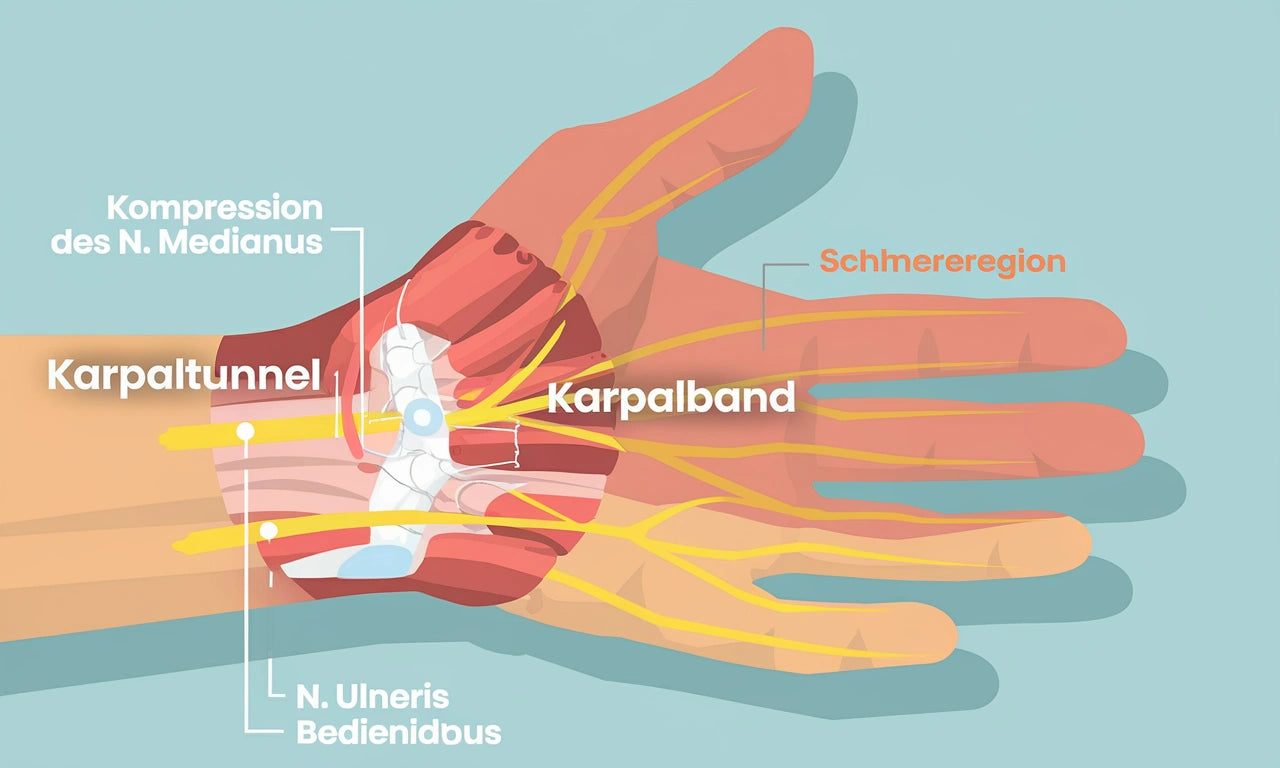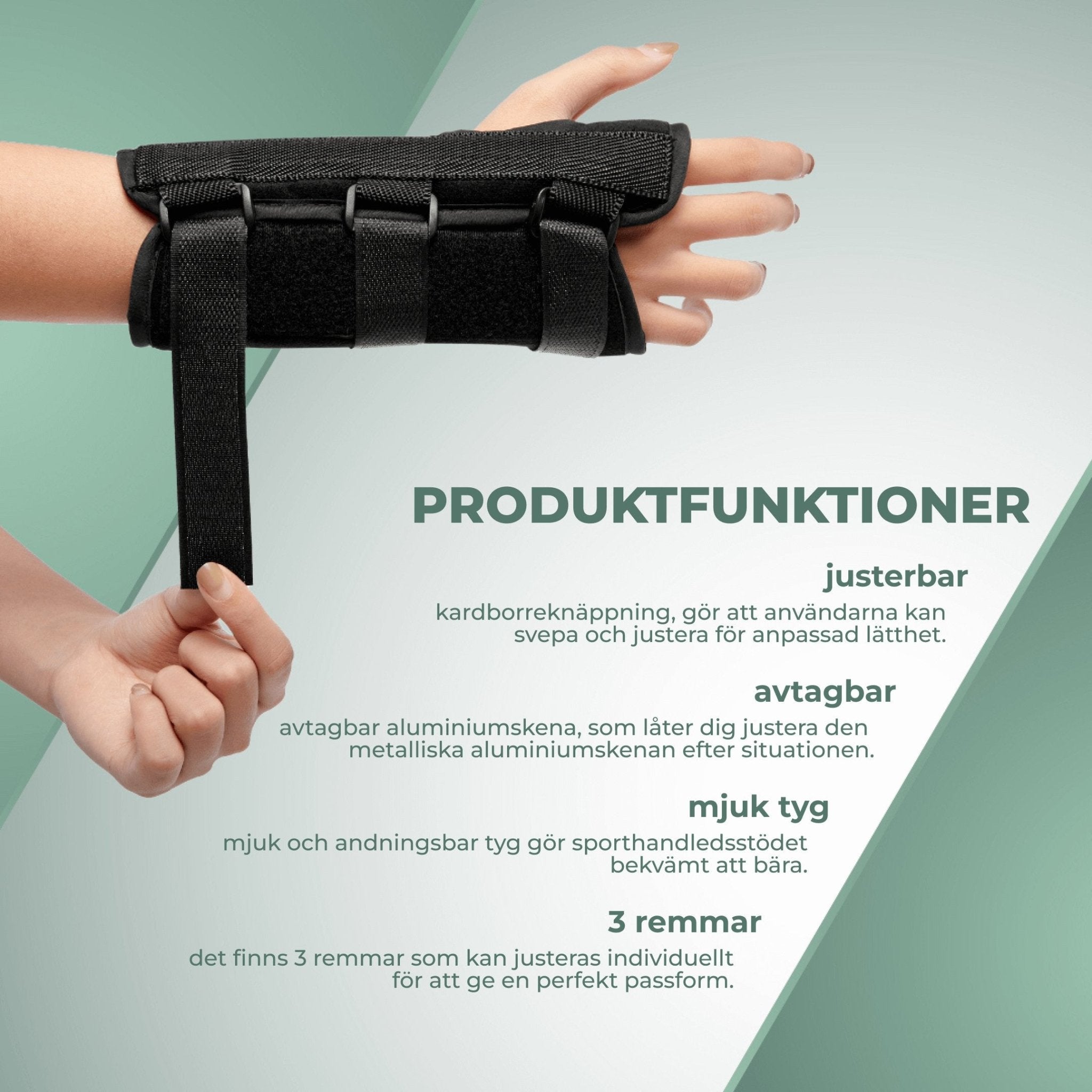Carpal Tunnel Syndrome (CTS): Symptoms, Causes, and Treatment

Carpal tunnel syndrome, also known as carpal tunnel syndrome in English, is a common condition that causes numbness, tingling, and pain in the hand and forearm. This article reviews the most common symptoms, causes, and treatment options for carpal tunnel syndrome.
What is Carpal Tunnel Syndrome?
Carpal tunnel syndrome is a nerve entrapment in the wrist where the median nerve is compressed when it is pinched. This condition causes pain, numbness, and tingling in the hand and fingers. Symptoms often begin in the palm of the hand and then spread to the fingers. Rest, physical therapy, and sometimes surgery can relieve the symptoms. Many patients experience reduced ability to perform everyday tasks due to pain and discomfort. A related condition in the foot is nerve entrapment such as Morton's neuroma , which also causes tingling and numbness.
Symptoms of carpal tunnel syndrome
Carpal tunnel syndrome often develops gradually and symptoms can vary in intensity. Common signs include:
- Numbness and tingling in the hand, mainly in the thumb, index finger, middle finger and half of the ring finger
- Pain that may radiate up the forearm and sometimes to the shoulder
- Weakness in the hand and difficulty gripping objects
- Clumsiness and tendency to lose things
- Worsening symptoms at night, which can disrupt sleep
- Feeling that the hand is swollen, even if there is no visible swelling
- Pain specifically in the thumb in case of long-term problems
- Impaired sensation in the fingertips
Numbness and tingling are also common with tingling in the hands and feet , which can sometimes be mistaken for carpal tunnel syndrome.
Causes of carpal tunnel syndrome
Carpal tunnel syndrome occurs when the median nerve, which runs through the carpal tunnel in the wrist, is put under pressure. Several factors can contribute to this:
- Repetitive hand movements, especially at work
- Pregnant women are more often affected due to hormonal changes
- Hereditary factors, such as a naturally narrow wrist
- Diseases such as diabetes, rheumatoid arthritis, and hypothyroidism
- Wrist or hand injuries
- Overweight
- Prolonged use of vibrating tools
Pressure on nerves is also a common cause of nerve pain in the back , which is reminiscent of the pain characteristic of carpal tunnel syndrome.
Diagnosis and treatment of carpal tunnel syndrome
Carpal tunnel syndrome occurs when the median nerve in the wrist becomes compressed, leading to numbness, tingling, and pain in the hand and fingers. Effective treatment requires a thorough diagnosis, often made by a doctor or occupational therapist. Rehabilitation can then help restore mobility and reduce discomfort.
The treatment aims to relieve the wrist, reduce swelling and provide support during both rest and activity.
Wrist splint
A wrist splint stabilizes the wrist and reduces pressure on the nerve, especially at night when symptoms often worsen.
Wrist protection with a splint provides steady support and relief around the clock, which contributes to faster recovery and reduced pain.
Physiotherapy
Exercises to improve nerve mobility and blood flow can help relieve symptoms. Your physical therapist may recommend stretching or gentle movements that strengthen the muscles of your forearm.
The wrist guard can be used at the same time to provide stability during exercises.
Anti-inflammatory drugs
For mild to moderate complaints, anti-inflammatory medications can reduce swelling and pain.
A wrist brace can often reduce the need for medication by providing natural support for the wrist.
Cortisone injection
In more severe cases, cortisone injections can be given under local anesthesia to quickly relieve inflammation and pain.
Early use of wrist guards can in some cases prevent the need for injections.

How Wrist Protection with Splint Can Help with Carpal Tunnel Syndrome
Wrist braces offer several benefits for people suffering from carpal tunnel syndrome:
- Keeps the wrist in a neutral position, reducing pressure on the median nerve
- Can be used both day and night for continuous support
- Prevents extreme wrist positions during sleep
- Provides support during daily activities without completely restricting hand mobility
- Helps reduce inflammation and swelling in the carpal tunnel
The protection works according to the same principle as Back Comfort™ , which provides targeted support and relief from muscle tension or inflammation in the back.
Buy nowConclusion
Carpal tunnel syndrome can be a painful and limiting condition, but with early diagnosis and proper treatment, most people can experience significant improvements. By combining the use of wrist guards with a splint, ergonomic adjustments, and in some cases medical treatment, many can effectively manage their symptoms and prevent deterioration. It is important to seek care early to avoid permanent nerve damage and to receive an individually tailored treatment plan. In case of simultaneous pain in other parts of the body, such as rheumatism in the hands and feet , underlying diseases should also be investigated.
Frequently Asked Questions (FAQ)
Can carpal tunnel syndrome go away on its own?
In the early stages, symptoms can sometimes be relieved with rest and the use of wrist guards, but without action, the condition risks worsening over time.
How long do I need to use a wrist splint?
The duration of use varies, but many people experience improvement after a few weeks of regular use, especially at night.
Is surgery always necessary for carpal tunnel syndrome?
No, many cases can be treated successfully with conservative methods such as wrist braces and physiotherapy. Surgery with local anaesthetic is usually only considered if symptoms are severe or do not improve with other treatments.
Can exercise worsen carpal tunnel syndrome?
Certain types of repetitive exercises can worsen symptoms, but light stretching and nerve gliding exercises recommended by an occupational therapist may be beneficial.
How do I prevent carpal tunnel syndrome?
By taking regular breaks during repetitive work, using ergonomic tools, and wearing wrist guards during risky activities, you can reduce the risk of the nerve becoming pinched and thus developing carpal tunnel syndrome – a method of working that is also recommended for mouse arm/lateral epicondylitis .

